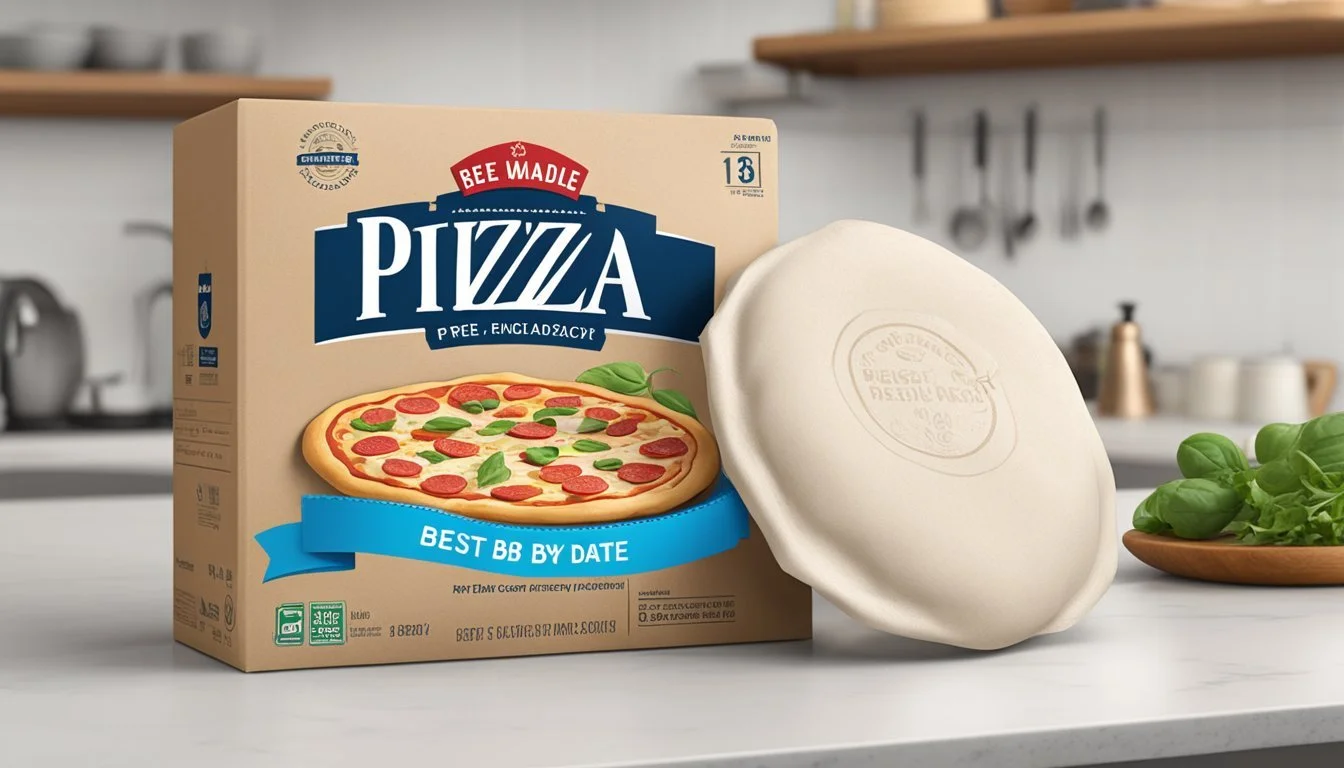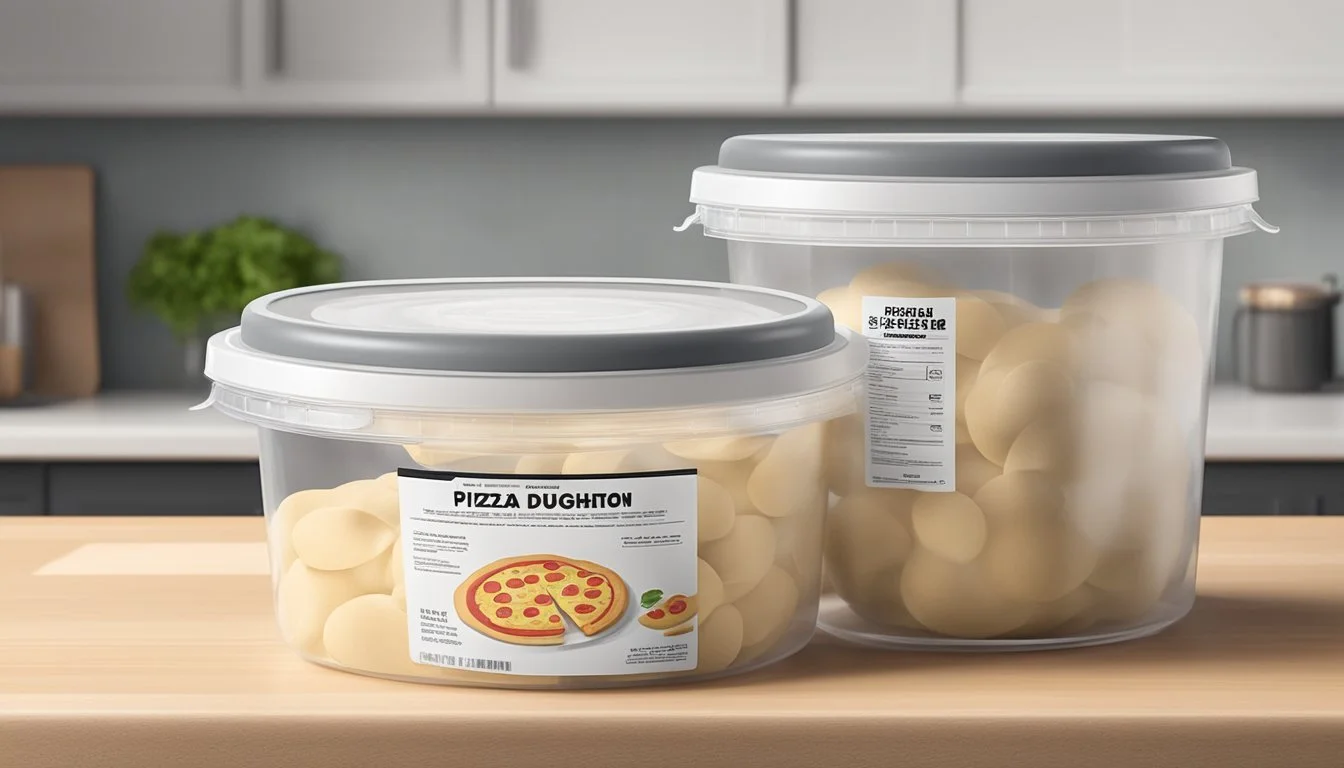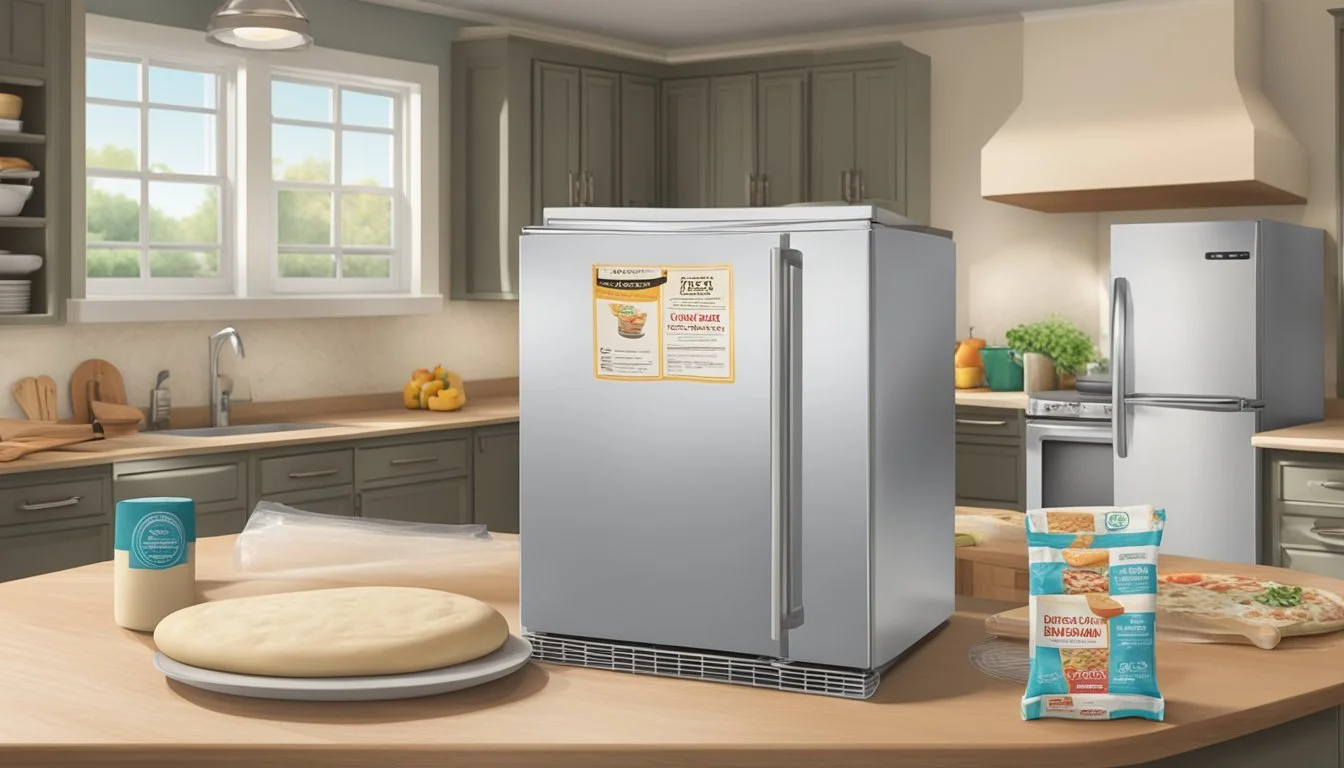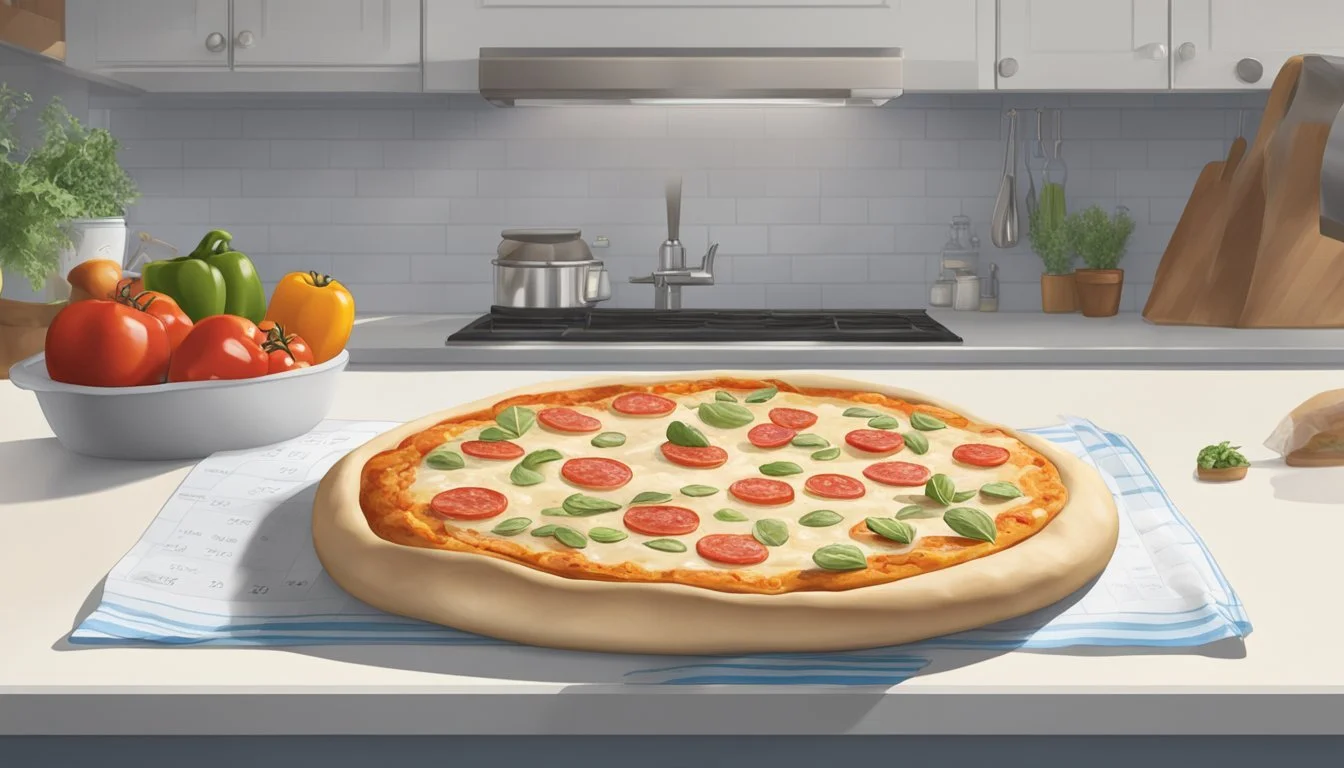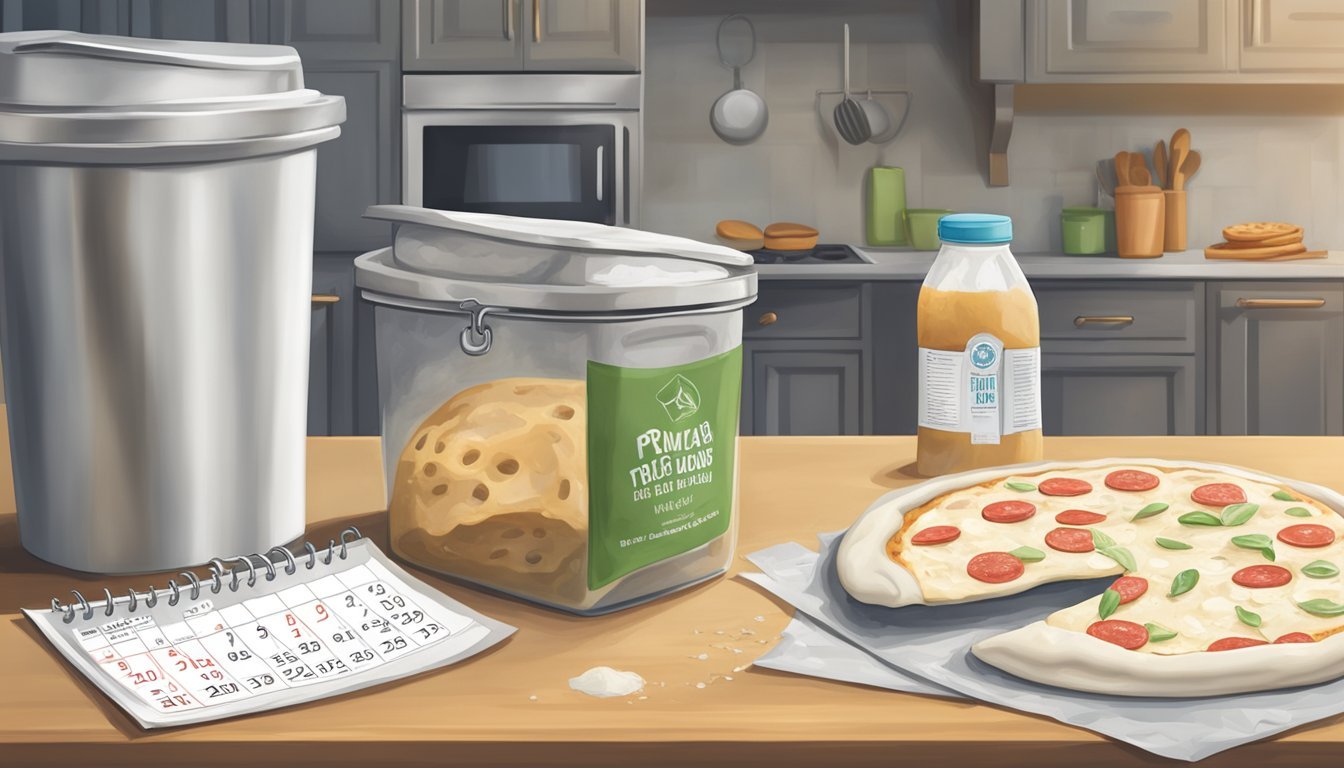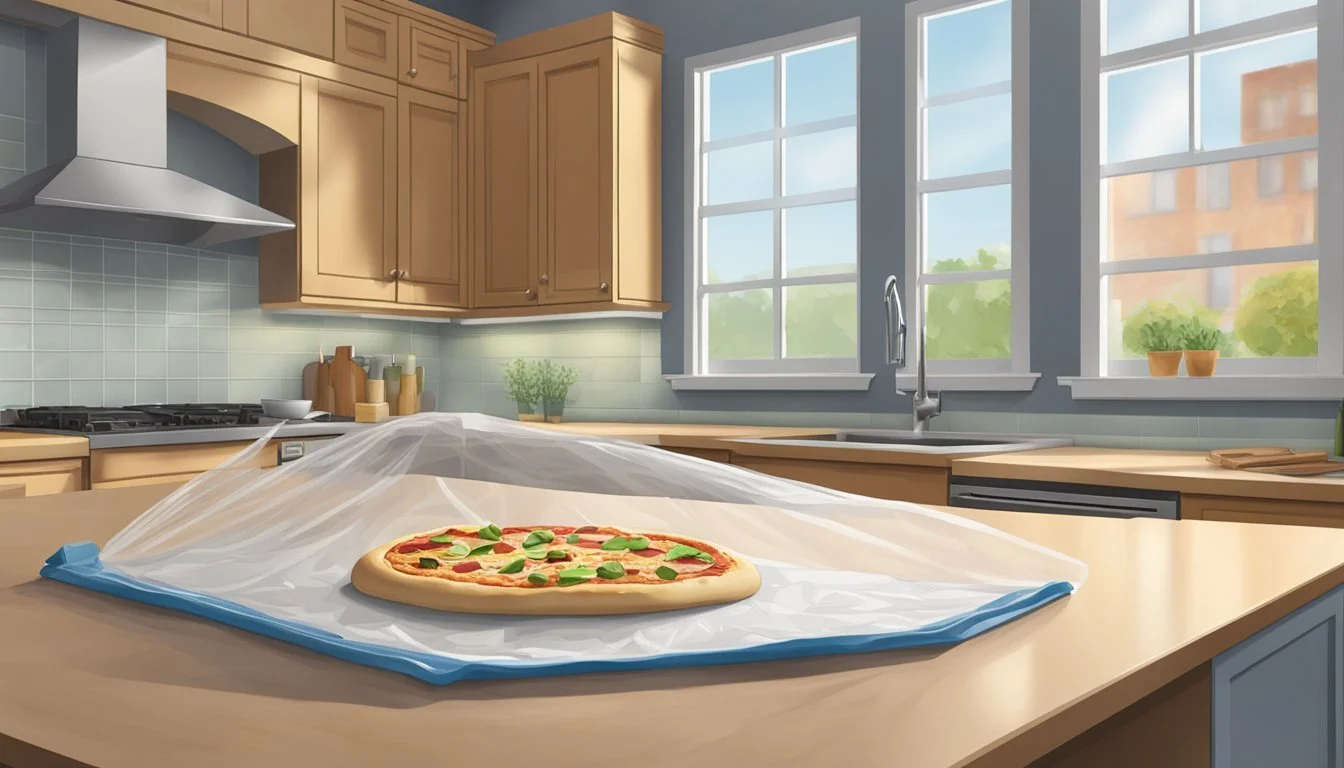How Long Does Pre-Made Pizza Dough Last?
Shelf Life and Storage Tips
The shelf life of pre-made pizza (What wine goes well with pizza?) dough varies depending on storage conditions and whether the dough is homemade or commercially manufactured. Homemade pizza dough typically lasts 2 to 4 days in the refrigerator, while commercially made dough can often be used safely for 3 to 5 days. Understanding the longevity and storage best practices ensures the quality and safety of pizza dough.
Apart from refrigeration, freezing extends the lifespan of pizza dough significantly. When frozen, pizza dough maintains its quality for up to 3 months. Consumers seeking convenience without sacrificing the fresh taste of homemade pizza find that using pre-made dough can be a practical solution, provided it's stored correctly and used within an appropriate time frame.
Identifying when pizza dough has passed its prime is crucial to prevent spoilage. Characteristics such as a grey hue, unpleasant odor, or the presence of freezer burn indicate that the dough is no longer suitable for consumption. Observing these conditions helps to ensure that each pizza made from pre-made dough is both delicious and safe to eat.
Understanding Pizza Dough
In the world of pizza-making, the quality and longevity of pizza dough are pivotal. The dough serves as the foundation for any pizza, influencing texture, flavor, and overall enjoyment.
Ingredients and Types of Pizza Dough
Basic pizza dough consists of flour, water, yeast, and salt. Optionally, olive oil is added for flavor and moisture. All-purpose flour is versatile, while bread flour provides more gluten and structure, suitable for chewier crusts. Wheat flour adds a nutty flavor and robust texture. Neapolitan-style dough, with its high temperature and fast cooking time, typically uses finely milled type 00 flour, which can tolerate extreme heat while maintaining a delicate crust.
Role of Yeast in Pizza Dough
Yeast, a crucial ingredient, acts as a leavening agent. It metabolizes the sugars present in the flour, releasing carbon dioxide, which makes the dough rise. The type of yeast used—whether active dry, instant, or fresh—affects the fermentation rate and flavor development of the dough.
Fermentation Process
Fermentation is the biochemical transformation of dough's organic substrates by yeast. It is divided into two stages: bulk fermentation, when the entire mass of dough rises, and proofing, after the dough has been shaped. Proper fermentation not only helps the dough rise but also enhances its flavor and texture.
Factors Affecting Pizza Dough Quality
Several factors influence the quality of pizza dough:
The hydration level (ratio of water to flour)
Kneading technique (gluten development)
Fermentation time (affects flavor complexity)
Temperature (yeast activity and dough rise)
Factor Role in Dough Quality Hydration Dictates dough's moisture, extensibility, and final bake texture Kneading Develops gluten network for elasticity and strength Fermentation Impacts flavor development and dough structure Temperature Modulates yeast activity and rate of dough expansion
Signs of Over-Fermentation
Dough that has fermented too long may show:
An overly sour smell
A deflated or overly expanded appearance
A grey and lifeless color
Weak structure that tears easily
Food Safety and Risks
Unbaked pizza dough can harbor foodborne pathogens. Temperatures below 40°F are essential for refrigerated dough to limit bacterial growth. If store-bought dough smells off or is past its "use-by" date, it's best to discard it to prevent illness.
Dough Pizza Basics
Homemade dough typically lasts 2 to 4 days in the refrigerator, while store-bought can last a bit longer due to preservatives. In the freezer, homemade and store-bought dough can remain usable for up to 3 months. Always allow the dough to reach room temperature before baking to ensure an evenly cooked pizza.
Storage Guidelines
Storing pre-made pizza dough correctly is crucial to maintain its quality and extend its shelf life. The following guidelines provide specific methods for refrigerating and freezing pizza dough, along with proper containers to use for storage.
Refrigeration Methods
For short-term storage, pizza dough should be kept in the refrigerator at a constant temperature. Place the dough in a container that shields it from light and heat sources. A temperature between 32°F and 40°F is ideal for slowing down yeast activity and preventing spoilage.
Freezing Techniques
When storing pizza dough for more than a couple of days, freezing is the optimal choice. To prevent freezer burn, wrap the dough tightly in plastic wrap or aluminum foil, or place it in a food sealer bag. Store the dough at 0°F to keep its quality intact.
Shelf Life Considerations
The shelf life of pizza dough varies depending on the storage method. In the refrigerator, homemade pizza dough can last for up to 2 to 4 days, while in the freezer, it can be stored for 2 to 3 months. Note the expiration date when using store-bought dough to ensure freshness.
Proper Storage Containers
An airtight container is essential for storing pizza dough. This prevents air exposure and moisture loss, which can cause the dough to become dry and tough. Containers made of glass or plastic with a secure lid are suitable options for both refrigerating and freezing pizza dough.
Defrosting and Thawing Recommendations
To thaw frozen dough, transfer it to the refrigerator for at least 12 hours before use. This gradual defrosting process helps retain the texture and elasticity of the dough. Avoid thawing at room temperature, as it can result in uneven defrosting and promote bacterial growth.
Quality Assessment
In determining the quality of pre-made pizza dough, one must be vigilant for signs of spoilage. This involves inspecting the dough's appearance, smell, and texture to assess its freshness and suitability for consumption.
Checking for Spoilage
The fermentation process inherent in pizza dough can lead to spoilage over time. Indicators of dough past its prime include a sour smell and mold growth. If the dough emits a sour or off odor, it should be discarded. Mold, often appearing as visible spots or patches, signifies that the dough is no longer safe to consume.
Visual and Textural Clues
When examining pizza dough for quality:
Color: The dough should maintain a consistent white or beige appearance. Discoloration, such as a grey hue, indicates spoilage.
Texture: Fresh dough should be soft and pliable. If the dough feels dry, slimy or has a notable change in texture, such as being excessively sticky, these are signs that it may have gone bad.
Odor and Taste Evaluation
Odor: A primary method of assessing the freshness of dough is to smell it. The dough should not exhibit a sour or unusually strong yeast odor; an unpleasant smell implies that the dough is deteriorating.
Taste: Although taste should not be the first test due to potential health risks, if the dough has an unusually sour taste in addition to other negative signs, it should not be used. Dough intended for consumption should have a neutral or slightly yeasty taste, indicative of proper fermentation without spoilage.
Maximizing Freshness
Ensuring pizza dough remains fresh requires proper handling and storage techniques. These methods prevent the growth of bacteria like E. coli or salmonella and preserve the dough's ability to rise effectively when it reaches the kitchen oven for baking.
Optimal Dough Handling
When one handles homemade pizza dough, it is imperative to maintain hygiene to prevent bacterial contamination. After preparing or purchasing pre-made dough, one should store it in the refrigerator at 34-38°F (1-3°C) to slow down yeast activity and bacterial growth. To keep the dough fresh, they should use it within 1-2 days when stored in the fridge. Dough should be wrapped in plastic wrap or placed in an airtight container to prevent it from absorbing odors and drying out.
Before baking, they should allow the dough to come to room temperature, which usually takes about 30 minutes. This step is crucial because dough that is too cold will not rise properly, affecting the texture and taste of the baked pizza.
Preventing Freezer Burn and Spoilage
When storing pizza dough for extended periods, the freezer is the best option to avoid spoilage. Here are key points to prevent freezer burn and spoilage:
Wrap dough tightly: One should wrap the dough in plastic wrap and then place it in a freezer bag or an airtight container to protect against freezer burn.
Label with dates: Clearly labeling the dough with the date of freezing helps to keep track of its shelf life, which is typically up to 3 months in the freezer.
Thawing: To use frozen dough, they should thaw it in the refrigerator for 12 hours or at room temperature for a few hours, but it must remain sealed to reduce the risk of bacterial growth.
By employing these strategies, one can maximize the freshness of pizza dough and ensure it rises beautifully for the perfect bake.
Usage Tips
When working with pre-made pizza dough, the baker’s approach during preparation and baking can greatly influence the final taste and quality of the pizza.
Preparing for Baking
Before a pizza dough can be dressed with toppings and subjected to the heat of the oven, it requires careful preparation to ensure optimal baking results. One should bake the naked pizza dough at 450°F (232°C) for 7 minutes to set the structure. To do this:
Preheat the oven to the recommended temperature to ensure consistent baking.
Shape the dough: It should be brought to room temperature for easier handling. The dough can then be stretched or rolled out into the desired shape, taking into account that a thinner base will cook more quickly and is typical for styles like Neapolitan pizza.
Adding Toppings and Baking Recommendations
Toppings play a pivotal role in the final taste and should be added thoughtfully:
Recommendation for sauce and toppings: After pre-baking, the dough should be brushed with olive oil around the edges to encourage a golden crust. Then, one can add the sauce, spreading it evenly, but not too close to the edges to avoid sogginess.
Herbs and cheeses: This is the perfect stage to add any dried herbs for additional flavoring followed by a generous amount of cheese. For specialty pizzas like a white pizza, ricotta or mozzarella may be used as the base in place of traditional red sauce.
For the final bake, the pizza should be placed into an oven preheated to 500°F (260°C) where it will cook quickly, achieving the desired balance of melted cheese and toppings with a crisp and airy crust. The recommended baking time in a conventional home oven is usually around 10-15 minutes, but one should always observe the pizza and adjust the timing according to their oven's particularities and their recipe's specifications.
FAQs and Troubleshooting
This section addresses frequently asked questions regarding the shelf life of pizza dough and provides practical solutions to common problems encountered when handling it.
Common Questions About Pizza Dough Shelf Life
How long does pre-made pizza dough last?
In the fridge: Pre-made pizza dough can typically last between 2 to 4 days. However, some store-bought varieties may remain usable for up to 5 days if refrigerated properly.
In the freezer: The dough can maintain quality for up to 2 to 3 months. For those doughs labeled as live or containing active yeast, a maximum shelf life of four months could be possible, with a possible decline in quality if used beyond that time frame.
How can you tell if pizza dough has gone bad?
Color change: Dough that exhibits a grey hue instead of its fresh white or beige appearance may indicate spoilage.
Odor: A sour or unpleasant smell is a strong indicator that the dough should not be used.
Texture: If the dough feels unusually sticky or has visible mold, it's past its prime.
Problems and Solutions When Handling Pizza Dough
Problem: Dough is sticky
Solution: Gradually knead in small amounts of flour until the dough ceases to be sticky and achieves a smooth, firm consistency.
Problem: Dough is undercooked in the middle
Solution: Ensure the pizza is cooked at the correct temperature and for an adequate amount of time. Par-baking the crust, cooking at a high temperature and using a preheated pizza stone can aid in achieving a thoroughly cooked pizza.
Problem: Dough keeps shrinking back
Potential Reasons and Solutions:
Over-fermentation: This can cause the gluten structure to weaken, making the dough elastic and prone to shrinking. Use the dough before it over-ferments by monitoring its rise and storing conditions.
Improper kneading: Adequate kneading develops the gluten network necessary for the dough to hold its shape. Knead until the dough passes the windowpane test, indicating a strong gluten structure.
Problem: Dough has freezer burn
Solution: Prevent freezer burn by wrapping dough balls tightly in plastic wrap and storing them in an airtight container or freezer bag. If dough does show signs of freezer burn, it's best to discard it to avoid quality and taste issues.
Handling pizza dough with care and attention to its shelf life ensures chefs and home cooks alike can produce high-quality Neapolitan pizzas and other styles without worries of food poisoning or lackluster results.
Conclusion
The shelf life of pre-made pizza dough varies, but it generally falls within certain time frames when stored correctly. In the refrigerator, store-bought pizza dough can last up to 5 days. For homemade pizza dough, a window of 3 to 5 days is typical, depending on specific ingredients used. Freezing extends this shelf life significantly, with both store-bought and homemade dough lasting up to 3 months.
The key to maximizing freshness and usability lies in proper storage. The dough should be sealed in an airtight container or plastic wrap to prevent it from drying out or absorbing odors. Additionally, observing the use-by date on commercial products is essential for quality assurance.
Factors such as the presence of preservatives in store-bought dough, the type of yeast, and the protein content in the flour can impact how long the dough remains usable. Signs that pizza dough has passed its prime include a sour smell, a gray color, and a noticeable change in texture.
In summary, careful attention to storage details and an understanding of the signs of aging can help ensure that pizza dough is used within a safe and flavorful time frame.

